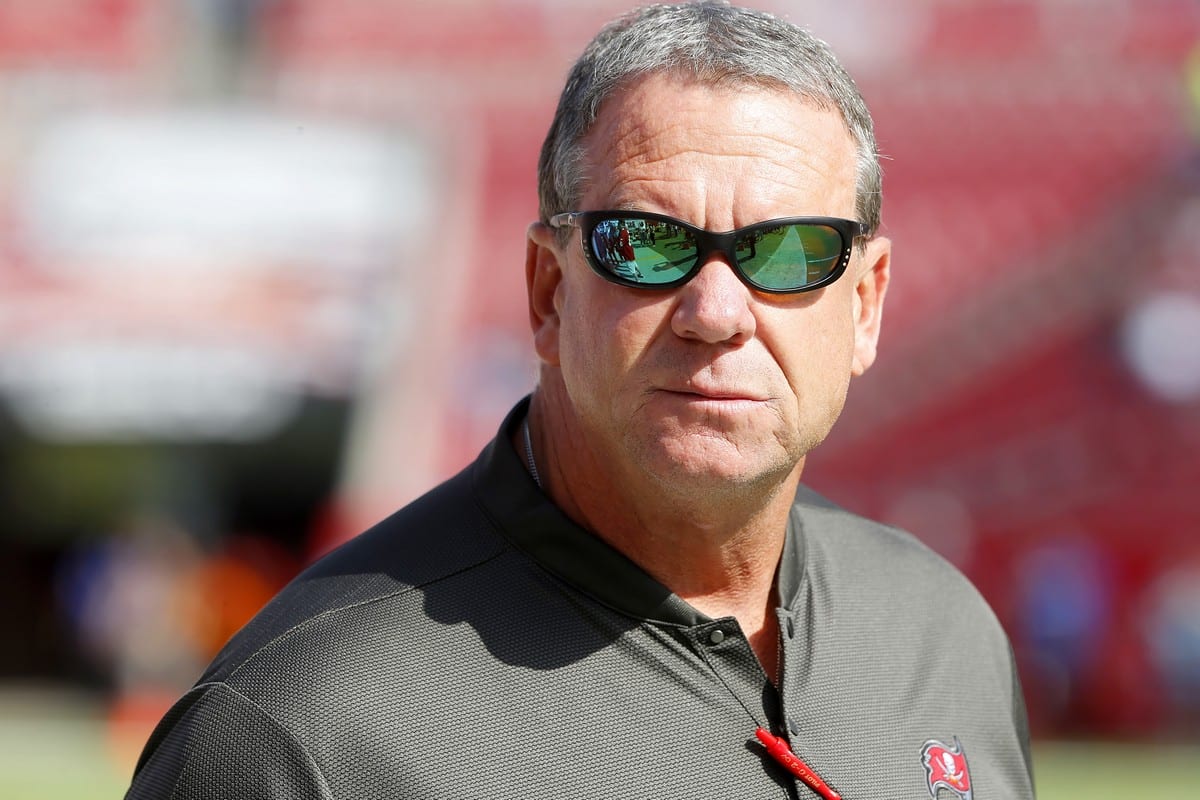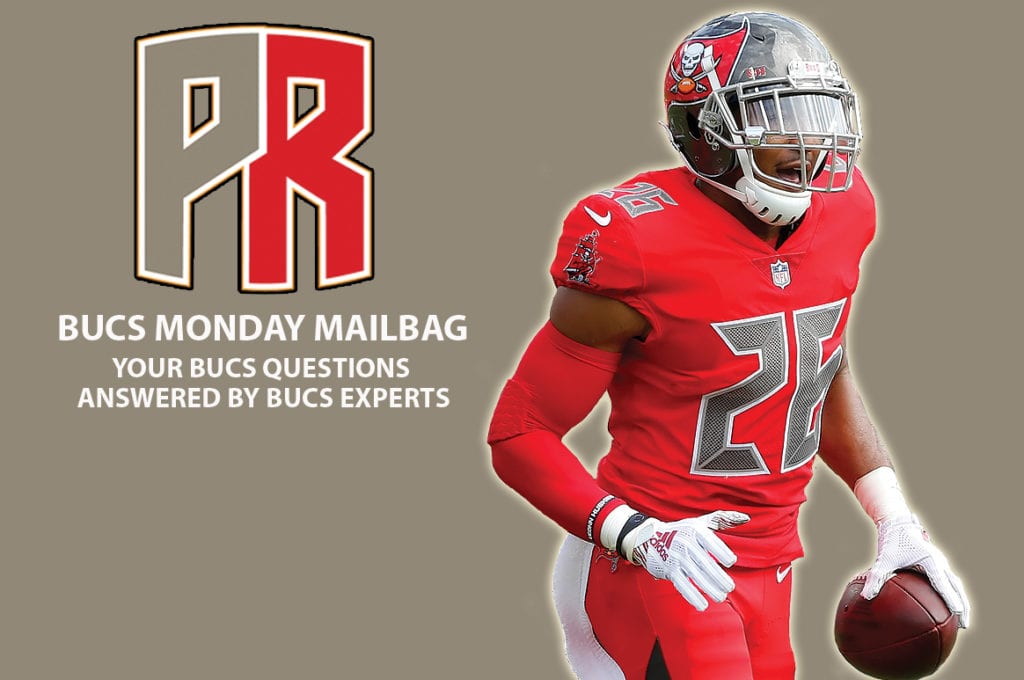All-Twenty Tuesday: Bucs Defense
This week I wanted to really focus on some of the schematic and execution parts of the Buccaneers defense to try to explain to you all just why things are turning out different in Tampa Bay lately, and what we mean when we say that Mark Duffner is improving the defense.
The first is in his willingness to be creative. When middle linebacker Kwon Alexander went down for the year with his injury, the Buccaneers had to adjust. Their philosophy over the last two seasons – though bad – was to run their entire defensive scheme through their linebackers, meaning they wanted to keep them free at all times.
What that means is that the way they would design both the pass rush up front and the coverage around them would be based in such a away that the linebackers were allowed to read, react and go make plays with the defensive line upfront doing most of the dirty work. When you have players like Alexander and Lavonte David (and even Kendell Beckwith) it makes sense, in theory, because those are two of the best players on your defense in one unit. However, most of the time it’s an extremely ineffective way of actually stopping an opposing offense, especially in today’s game.
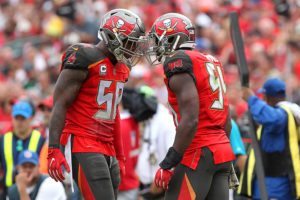
Bucs Linebackers Kwon Alexander and Lavonte David – Photo by Cliff Welch/PR
Allowing your linebackers to stay free means that you’re really two-gapping some of your defensive linemen. When you do that, you tell the linemen they’re responsible for two gaps instead of one, so instead of just attacking the pocket at the snap, they’re more hesitant to move from their starting spot due to the fact that they have to watch where a ball carrier is going, or even stay home on play action.
In theory, the reason you two gap as a defensive line is because you hope that by the time the running back gets to the line of scrimmage, all the blockers are accounted for and the linebackers can have a free shot at the ball carrier. Again, makes sense, in theory, but as offenses adjust and as passing plays are called, it was proven to be far too soft of a mentality for the Buccaneers, hence all the yards and points given up.
On passing plays you would think that, if left free, the linebackers would have the green light to attack the pocket, but Mike Smith didn’t do that. You’d often see the linebackers dropping back into zone coverage, by nature, and therefore you’d just have four defensive linemen as the pass rush. No wonder the Buccaneers didn’t have much sack production last year.
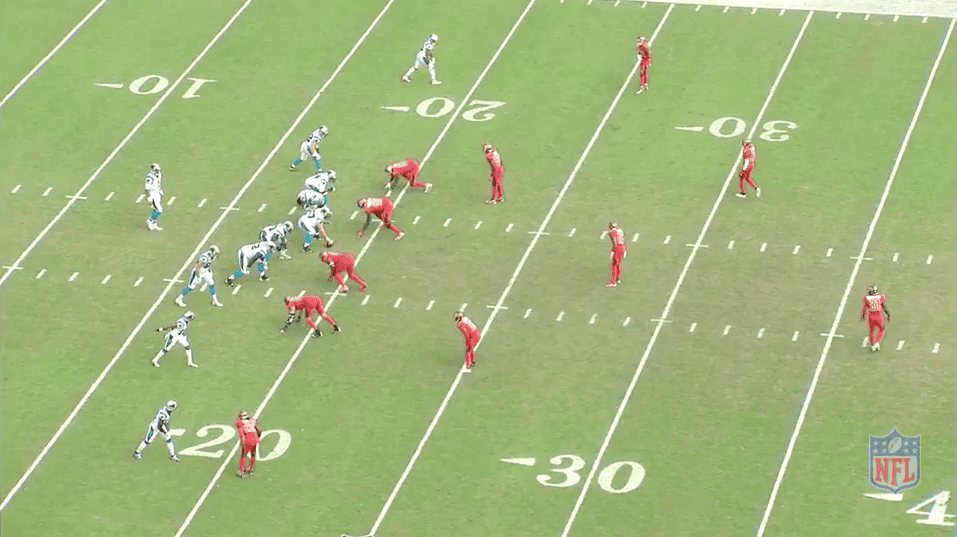 Since Duffner took over things looks different.
Since Duffner took over things looks different.
You never want to say that losing a guy like Alexander is a good thing, so I wouldn’t put it that way. However, the loss of Alexander did force the Buccaneers to get out of that Smith shell a lot quicker, due to the fact that they then had to shift defensive focus with one of their focal points down (then when David missed time, too).
This allowed Duffner to put his fingerprints on the defense in creative and aggressive ways.
In the screenshot above, we saw one of the new alignments this Buccaneers team is playing with on third-and-long. It’s called a “dime” package. You’ve heard of “nickel” formations, which is when a cornerback is subbed in for a linebacker to give the team five defensive backs. Dime is one step further, as they sub yet another defensive back onto the field to give them six – either with four cornerbacks and two safeties, or three cornerbacks and three safeties. This is a formation used for obvious passing situations, but isn’t used as regularly across the league as it has been with the Buccaneers since Alexander went down.
The reason why dime isn’t used very much is because it can be tricky to get spacing correctly. You don’t want to just put every defensive back in man coverage at the line of scrimmage, because if one gets beat there is absolutely no help. So instead the result of good dime defense is shown above – creatively.
You may have heard the phrase “big nickel” be used over the last year or so. It’s a variation of the nickel formation that adds a safety instead of corner to the field in sub for a linebacker. That means there are three safeties and two corners on the field instead of two safeties and three corners. The reason you would do this is to potentially have better run support with a bigger, stronger defensive back (safety vs. cornerback) and also potentially be a better neutralizers for say, a tight end in the slot over a quick speedy wide receiver.
The Bucs took that mentality and created what you could call a “big dime” formation with safety Andrew Adams as the sixth defensive back in. It’s not a brand new concept or anything. We’ve seen teams like the Arizona Cardinals sub in safety Deone Bucannon almost as a full-time middle linebackers in their 3-4 defense that can rotate into a big nickel or big dime look at anytime.
Think of it this way. Have you ever played rec league softball? Generally there are three outfielders, but sometimes if you’re playing a team that really knows how to hit the ball right over the second basemen and short stop’s heads, teams might take one of their fastest outfields and put them right behind second base in a shallow outfield role to roam that area and really mess with spacing. It almost makes the fielding like a 4-1-3 formation, if you can picture it around the diamond.
That’s what the Bucs are doing with Adams, as shown in the two clips above.
The Bucs didn’t really do anything different on that play in terms of responsibilities, but the fact that they had Adams in that shallow centerfield role was the reason he was in the area and could take that ball away for his first interception of the game.
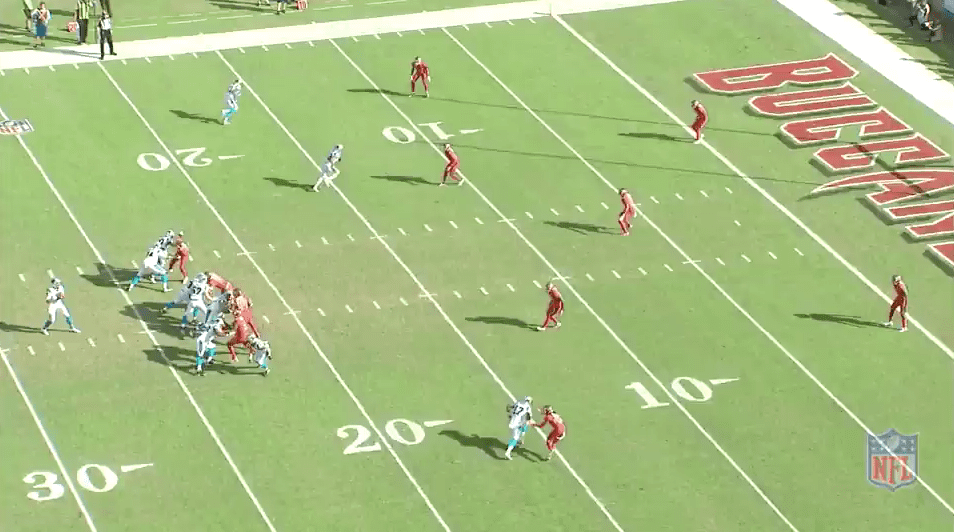 On a long third down attempt later in the game, we once again saw how the spacing of the Bucs’ big dime package just gave the Panthers fits, especially when Carolina went max protect on the play above.
On a long third down attempt later in the game, we once again saw how the spacing of the Bucs’ big dime package just gave the Panthers fits, especially when Carolina went max protect on the play above.
Certainly getting into third-and-long situations are the catalyst here, and we’ll get to how the Buccaneers did that more in a minute, but for now just take a look at the screen shot above.
First of all, that defense looks more like a soccer formation than it does an NFL defense, but the confusion is probably why it worked. The reason why the Buccaneers lost their last meeting with the Panthers was two-fold.
First of all, it was because they couldn’t tackle. Second, it was because when the Panthers would swing plays out wide with running back Christian McCaffrey or receivers D.J. Moore or Curtis Samuel it would stretch the defense thin horizontally, making them cover all the way to the sideline. Then Carolina could follow that up by going right back up the middle to a guy like tight end Greg Olsen.
On Sunday, when faced with a third-and-long, the Panthers couldn’t go up the middle, and they didn’t have good enough designs to go to the outside. The preparation the Bucs defensive staff did against the Panthers showed all game long. They had Carolina’s number in what the Panthers wanted to do most, and the Bucs were right there with confusing spacing to counter it.
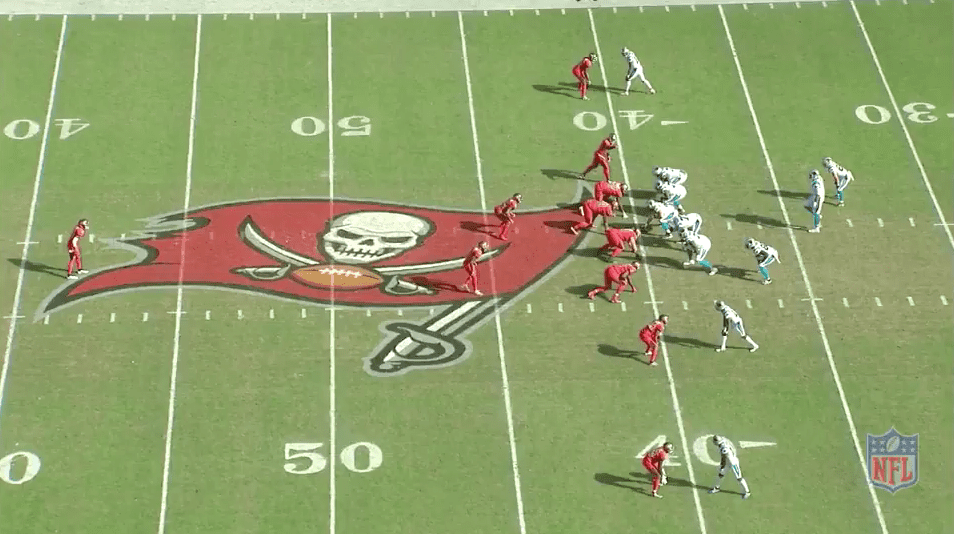 The last thing I wanted to point out this week was how aggressive the Bucs were, or at least were willing to be, on first and second down. You don’t get to bring out your secret weapon of dime defense if you’re not up on the scoreboard and if you’re not forcing the team you’re playing into obvious passing situations via third and long sets. The way you achieve those two goals is by not turning the ball over on offense (check) and be willing to get aggressive on early downs (also check).
The last thing I wanted to point out this week was how aggressive the Bucs were, or at least were willing to be, on first and second down. You don’t get to bring out your secret weapon of dime defense if you’re not up on the scoreboard and if you’re not forcing the team you’re playing into obvious passing situations via third and long sets. The way you achieve those two goals is by not turning the ball over on offense (check) and be willing to get aggressive on early downs (also check).
In the play above, the Buccaneers were lined up in true Cover 1. That means that there was one deep safety in the back in zone coverage and the rest of the players were in man coverage. Cover 1 is not a foreign concept to the Buccaneers. Even Smith called Cover 1 every now and then, but rarely did he ever pair with their aggressive close coverage all across the board as we saw above. And there is no way he would have done it with Ryan Smith, Javien Elliott and De’Vante Harris playing cornerback.
Press and pressure is a philosophy that must be sprinkled into defensive game plans in order to have success, and for the Buccaneers, the recipe for success against this specific Panthers team called for it on a few occasions.

Bucs DC Mark Duffner – Photo by: Mary Holt/PR
The Panthers win with short passes to their speedy receivers. So when you press them and keep initial separation to a minimum, you give your defensive line adequate time to get to the quarterback and either finish the play with a sack or affect the throw in a bad way.
What you do on early downs matters. What you ask of your defensive line matters. How you align your coverage matters. Staying creative with spacing matters. It’s all about making the opposing team’s quarterback and offensive coordinator as uncomfortable as possible. Stop the run, score early, then get more aggressive as the game goes on.
That’s a winning defense in today’s NFL. That’s Duffner’s approach.
Trevor Sikkema is the Tampa Bay Buccaneers beat reporter and NFL Draft analyst for PewterReport.com. Sikkema, an alumnus of the University of Florida, has covered both college and professional football for much of his career. As a native of the Sunshine State, when he's not buried in social media, Sikkema can be found out and active, attempting to be the best athlete he never was. Sikkema can be reached at: [email protected]

